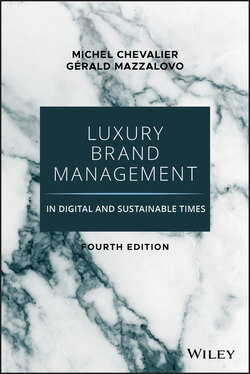Читать книгу Luxury Brand Management in Digital and Sustainable Times - Michel Chevalier - Страница 41
Company Size
ОглавлениеIn almost every business, size is a major—if not the most important—element in comparing firms or industries. But in the luxury world, size doesn't seem to matter that much. In general, luxury businesses are small, but they are respected and have impressive reputations. Dior Fashion had annual sales of approximately €3,500 million in 2019, while the Peugeot Group had annual sales of €74 billion—so, in fact, Peugeot is 20 times bigger than Dior Fashion. General Motors had sales of around €135 billion, 40 times those of Dior Fashion. The number of employees in each case is probably in the same ratio, if not higher.
But if you were to ask an American, Japanese, or Chinese consumer to name a French product or a French company, they would name Dior before Peugeot. This can be explained by brand awareness: the Dior brand is better known, worldwide, than the Peugeot brand. And this very high awareness comes from the fact that consumers have a genuine interest in luxury and fashion brands. They read about them in magazines and want to know more about them.
LVMH, the luxury-goods giant with a portfolio of more than 70 brands, had total annual sales of approximately €54 billion in 2019. Compare this with Zara Inditex, with €28 billion, or Gap, with €15. In other words, the average LVMH brand—which incorporates some of the most powerful brands in the luxury industry—is about 20 times smaller than Zara or Gap, and the biggest brand in the portfolio of LVMH is probably smaller than Zara or Gap.
We can conclude, therefore, that luxury brands are rather small but with very strong awareness among consumers. So, despite their prestigious image and their advertising presence all over the world, luxury companies are generally small to medium-sized enterprises (the exceptions being the larger conglomerates of small individual firms). Some companies are very small. Cardin has worldwide annual sales of only €10 million, and Carven has sales of around €5–10 million. This is much smaller than a Volkswagen dealership in Athens or a small group of five supermarkets in Birmingham. But, of course, Cardin and Carven remain worldwide brands.
How do such relatively small businesses achieve such a strong presence in the mind of the consumer?
